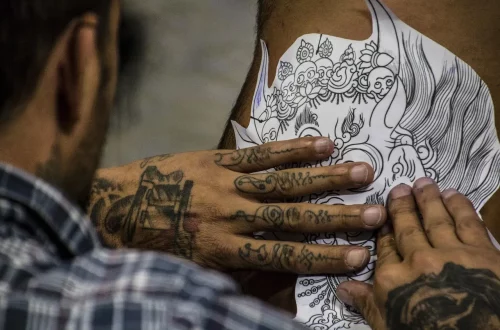
The Fascination with Big Penis Pics in Modern Culture
The allure of the human body has captivated cultures throughout history, and among the various attributes that spark fascination, size has always been a topic of interest. In modern society, with the proliferation of digital imagery and social media, the appeal of big penis pictures has emerged as a prominent aspect of contemporary culture. This phenomenon is intertwined with notions of masculinity, sexuality, and societal standards, all of which contribute to the obsession surrounding size.
As we navigate through a world dominated by visual stimuli, the representation of male anatomy in a grandiose manner serves various purposes—from boosting self-esteem to validating sexual prowess. The accessibility of such images has reshaped perceptions and expectations regarding body image and sexual performance. This phenomenon is not merely a passing trend; it reflects deeper psychological and cultural undercurrents. The engagement with these images transcends mere curiosity, often influencing relationships, self-worth, and societal norms surrounding masculinity.
In understanding the fascination with big penis pictures, we must explore its cultural significance, the psychological implications it carries, and how it intersects with the evolution of sexual expression in the digital age. This exploration reveals a complex interplay between individual insecurities and societal expectations, making it a compelling subject worthy of in-depth analysis.
The Cultural Significance of Size
Throughout history, various cultures have attributed different meanings to size, particularly in relation to masculinity and virility. In many societies, larger size has been equated with strength, power, and sexual prowess. This cultural narrative has been perpetuated through art, literature, and more recently, digital media. In ancient times, sculptures and paintings often idealized the male form, emphasizing attributes that were believed to convey dominance and fertility.
In contemporary culture, this idealization has morphed into a specific fixation on phallic size. The modern obsession can be traced back to various factors, including media portrayals and societal standards that dictate what is considered attractive or desirable. Movies, advertisements, and even music often glorify exaggerated representations of masculinity, reinforcing the notion that bigger is better. This pervasive imagery influences how men perceive themselves and each other, creating a competitive environment where size becomes a benchmark for self-worth.
Moreover, the digital age has allowed for the rapid dissemination of images that cater to this obsession. Social media platforms serve as a breeding ground for sharing and consuming content that celebrates exaggerated male anatomy, often without contextual understanding. This constant exposure can lead to unrealistic expectations, both for individuals and in intimate relationships. The cultural significance of size extends beyond personal preference; it shapes societal norms and ideals, ultimately impacting how masculinity is defined in modern society.
Psychological Implications of Size Obsession
The fixation on penis size can have profound psychological effects on individuals, particularly men. Many studies suggest that societal pressure to conform to certain standards of masculinity can lead to feelings of inadequacy and low self-esteem. Men may find themselves caught in a cycle of comparison, constantly measuring their worth against the exaggerated standards set by media portrayals and peer perceptions.
This obsession can also manifest in various ways, including anxiety and body dysmorphic disorder. The constant need for validation through physical attributes can create a distorted self-image, where individuals feel that their value is contingent upon their size. Such psychological ramifications can hinder personal relationships, as individuals may struggle to connect with partners when their self-worth is tied to external validation.
Additionally, the pressure to perform sexually based on size can lead to performance anxiety. Many men worry about meeting perceived expectations, which can detract from their ability to enjoy intimate experiences. This anxiety is often compounded by the stigma surrounding discussions of size, making it difficult for individuals to seek support or share their concerns openly.
In navigating these psychological implications, it becomes essential for individuals to foster a healthier understanding of masculinity. Emphasizing emotional intelligence, communication, and self-acceptance can help counteract the damaging effects of size obsession, allowing for a more nuanced appreciation of personal worth that transcends physical attributes.
Impact of Digital Media on Body Image
The rise of digital media has dramatically transformed how individuals engage with body image, particularly regarding male anatomy. Platforms like Instagram, TikTok, and various adult websites have created an environment where visual representation reigns supreme. In this digital landscape, images of exaggerated size are not just common; they are often celebrated and shared widely.
This accessibility has led to a normalization of unrealistic body standards. Users are bombarded with content that highlights exaggerated features, creating a skewed perception of what constitutes a “normal” body. The algorithms that drive social media often prioritize engaging content, which can perpetuate the cycle of idealization surrounding size. As a result, individuals may find themselves in a continuous loop of exposure to idealized images, further entrenching their beliefs about body image.
Moreover, the anonymity provided by digital platforms allows individuals to explore their curiosities without the fear of judgment. While this can be liberating, it can also reinforce unhealthy comparisons. The ease with which users can access and share explicit images can blur the lines between fantasy and reality, leading to unrealistic expectations in personal relationships.
As discussions around body positivity gain traction, there is a growing movement advocating for diverse representations of masculinity. However, the challenge remains to shift the narrative surrounding size from one of competition to one of acceptance. Promoting a more inclusive dialogue about body image can help mitigate the negative impacts of digital media, fostering a healthier understanding of masculinity that embraces diversity in all its forms.
Rethinking Masculinity in Modern Society
As society continues to evolve, there is a pressing need to rethink traditional notions of masculinity. The fixation on size and the resultant pressures faced by men highlight the limitations of conventional masculine ideals. In recent years, there has been a growing recognition of the importance of emotional expression, vulnerability, and authenticity as integral components of a healthy masculine identity.
Challenging the stereotype that equates size with worth requires a collective effort to redefine masculinity. This involves encouraging open conversations about body image, self-esteem, and the diverse expressions of male identity. By dismantling the stigma surrounding discussions of size and sexuality, individuals can cultivate a more supportive environment that values emotional intelligence over physical attributes.
Moreover, education plays a crucial role in reshaping these narratives. Integrating discussions about body image and masculinity into educational curricula can empower the next generation to embrace a more holistic understanding of self-worth. By promoting values of respect, empathy, and acceptance, society can move toward a more inclusive definition of masculinity that honors individual differences rather than perpetuating harmful stereotypes.
In conclusion, the fascination with big penis pictures in modern culture reflects deep-rooted psychological and societal dynamics. By understanding the cultural significance, psychological implications, and the impact of digital media, we can begin to foster a healthier dialogue around masculinity. Embracing diverse representations and challenging traditional norms can pave the way for a more accepting and compassionate society.
*Disclaimer: This article is not intended to provide medical advice. If you have any health concerns, please consult a qualified healthcare professional.*




